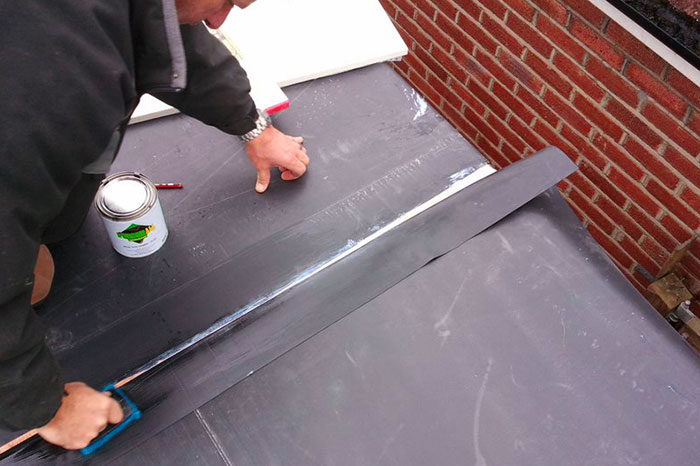7 Things You Need to Install a EPDM Rubber Flat Roof

The benefits of EPDM rubber flat roofs are countless.
Not only is it one of the most durable materials used in roofing by professionals, it is waterproof, easy to install and has a life expectancy of up to 50 years. Even better, with the right guidance and a few tools, non-professionals can install an EPDM rubber flat roof themselves. We’ve compiled a short checklist of what you’ll need to help you get started:
- The Right Tools
It may sound obvious, but whether you are starting from scratch or replacing an existing roof it is necessary to have the right tools in order to accomplish your task. For a EPDM rubber flat roof, you will need:
- Special scraper, square nose spade or shovel – to remove old roofing material
- A broom or leaf blower - to ensure the surface is clean before beginning to fit your rubber roofing material onto it.
- Sharp cutting tool, preferably scissors – to cut the pieces of the rubber roofing material to size.
- Penny roller – a useful tool to compress the rubber roofing membrane at the corners and angles to ensure a neat finish.
Other basics like a good quality drill, a hammer, rollers or brushes and glue to keep the materials together are also necessary.
- The Right Materials
Different roofs require different materials. Depending on the size and shape of your home, and even the part of the country your house is situated in, the materials required for your EPDM rubber flat roof will vary. Use our handy guide and calculator to determine the right materials and their required quantity for your rubber flat roof. Alternatively, consult a professional roofing service.
- A Broom or Leaf Blower
EPDM rubber flat roofing requires precision during installation, as even a few specks of debris under the membrane can lead to faults and the need for repairs very quickly. Any little lumps will be visible once the rubber is laid. Hence, it is advisable to keep a soft broom or blower tool handy in order to make sure the surface is clean and free of wood and dust before applying the adhesive and laying down the rubber.
- Water Based Deck Adhesive and Contact Adhesive
In order to hold the synthetic rubber roofing material to different parts of the roof, two kinds of adhesives are required. The water-based deck adhesive is best suited to the main area of the wooden base, where the rubber roofing will be attached to the surface. Contact adhesive (also known as bonding adhesive) is normally a solvent-based (2 sided) adhesive, which after it has been allowed to flash off, can create an instant bond for the EPDM rubber. Contact adhesives are mostly used on the perimeter of a roof and any vertical surfaces where the rubber is to be adhered. Where water-based adhesives can only be used on a wooden surface, contact adhesives can be used on various other surfaces.
- Flashing, seam and cover tapes
Flashing tape is a flexible tape for applying to detailed areas and will remain in the shape that it is stretched to. Flashing tape is normally applied where the rubber has had to be cut to go around an obstacle or detail on a rubber flat roof i.e. skylight, wall or chimney. Seam tape is primarily used to join two pieces of EPDM rubber where an overlap is achievable. Cover tape is mostly used for covering metal trims, joining abutted EPDM sheets (without overlap) or for minor repairs. All tapes should be used with tape primer.
- EPDM Rubber Primer
A good tape primer is essential before applying flashing tapes, seam tapes or cover tapes onto EPDM. The primer must be applied to the rubber and any other surface where tapes are to be applied. As mentioned above, surfaces should be dry and free of dust or dirt. The use of a scrub pad also allows the primer to key well into the surface it is being applied to. Remember, for seam tapes (double-sided tape), both surfaces must be primed in preparation for the join.
- Understanding
Even more important than the best tools available on the market and good quality materials, is an accurate understanding of the task you are about to undertake. EPDM rubber flat roofing has the ability to last up to 40 years, but one of the main reasons they may not achieve this target is due to poor installation methods. DIY tasks can be excellent, but at the same time, it’s strongly advisable to seek professional guidance before attempting a task as grave as quite literally putting a roof over your head. Remember to follow our YouTube channel for videos and tutorials.















